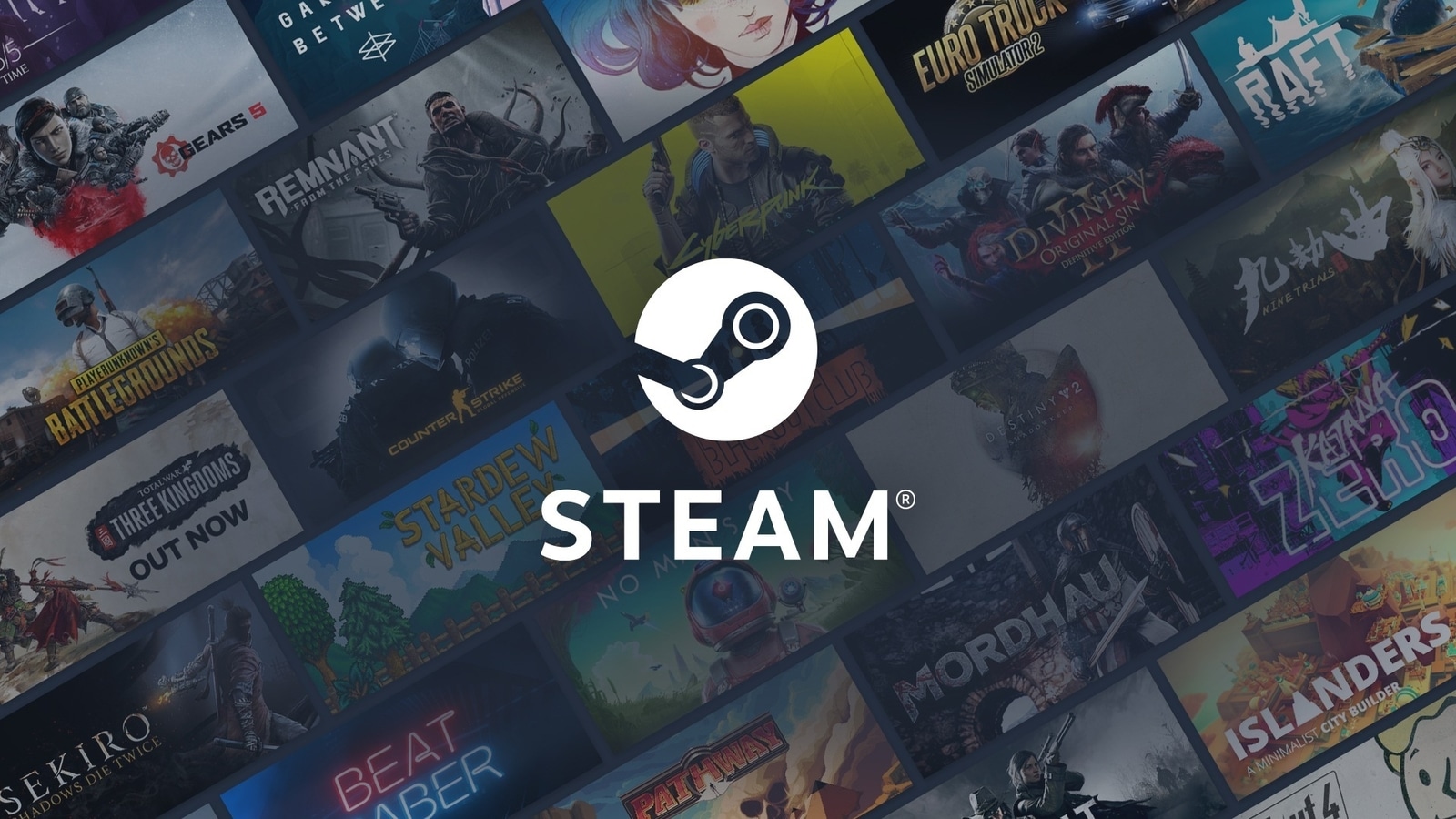Verdict
The Philips 48OLED808 is another slick Ambilight TV with engaging picture quality and good audio for a small TV. It isn’t as bright as hoped, though, and falters with stutter motion processing, and is still lacking Freeview Play integration for UK users.
Pros
- Sharp and detailed 4K image
- Superior audio system
- Ambilight
- Full house for HDR formats
- Wide gaming features
Cons
- Perceptually dimmer than predecessor
- Motion stutter
- Missing Freeview Play integration
-
P5 AI perfect picture engineImproves contrast, sharpness, and motion for a more ‘realistic’ image -
AmbilightThree-sided Ambilight support -
VRR4K/120Hz refresh rates, HDMI, AMD and Nvidia VRR support
Introduction
The Philips OLED807 was a cracking 4K TV, so I had every hope that its sequel – the OLED808 – would match and surpass its predecessor.
On the test bench is the 48-inch version – 48OLED808 – this latest model is one of the first batches of Philips’ OLEDs to move from Android TV to Google TV.
More of the same is not a bad precedent when talking about the follow-up to a five-star TV, though with LG dominating the OLED market, the 48OLED808 must put in a strong shift to persuade potential LG customers to jump ship.
Design
- Swivel stand
- Easier to assemble than previous model
- Excellent viewing angles
At first glance, there’s not much to differentiate between the OLED807 and OLED808 aside from the change in stand design. Gone is the shiny and chrome version that was magnet for fingerprints, and in its place is a grey-coloured central pedestal. It’s a more accommodating design if you don’t have a wide space to perch this TV on.
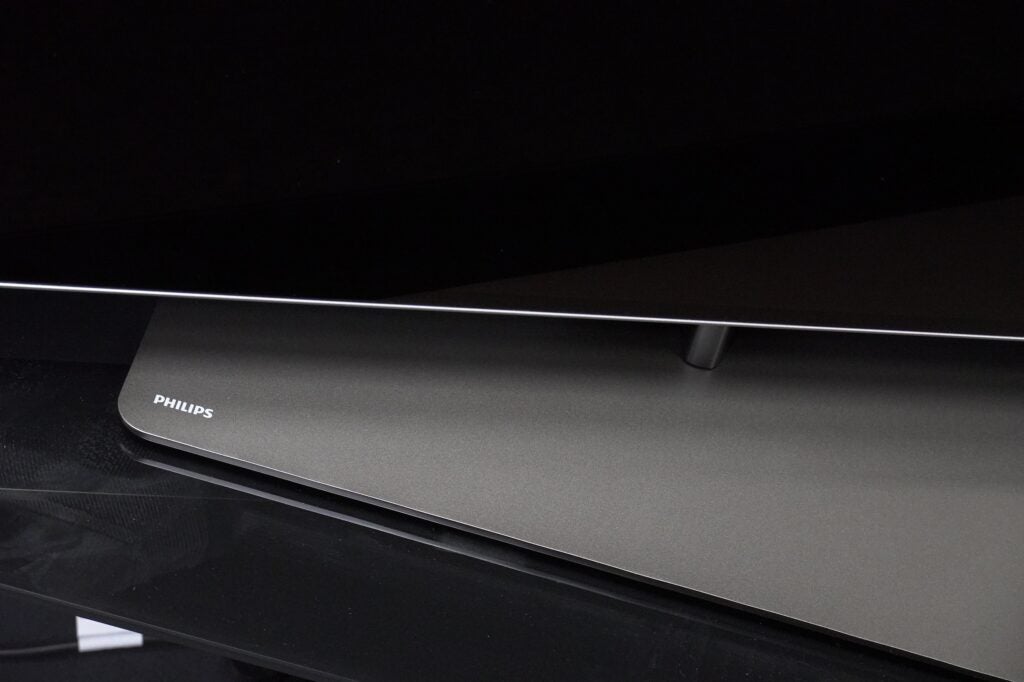
There is swivel action, especially helpful to protect against sunlight glare, and assembly is quicker – it took me around two minutes to put the TV together compared to five for the previous model. Around the back of the stand you’ll find a compartment to pipe cables through and keep the rear area free of clutter.
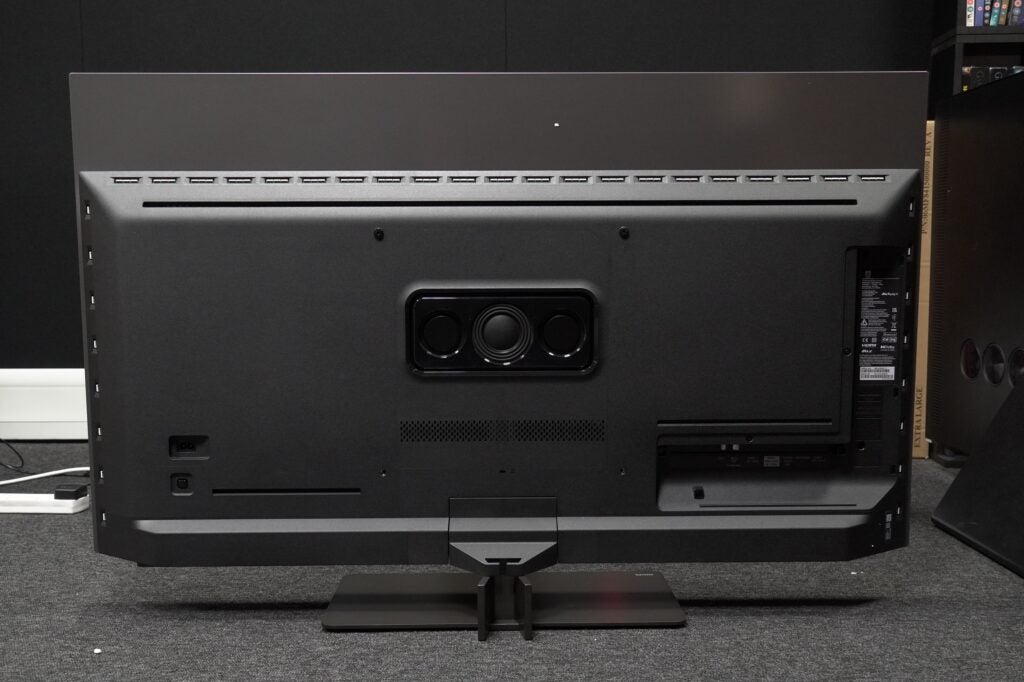
The rear panel design mirrors Philips’ prior mid-range OLEDs: the sound system planted in the middle, connections facing down and to the side, with the Ambilight system around the edges. The Ambilight system is a downgrade on the 2023 model, available in its three-sided form rather than four-side implementation. If you wall-mount it leaves the bottom edge exposed.
Coming back to the front and the Philips 48OLED808 is an aesthetically elegant TV. Slim bezels ensure plenty of space for its pictures, enclosed in a thin metal casing. Reflections weren’t a noticeable issue on this set, and viewing angles are excellent – as expected for an OLED – holding up better than LCD TVs.
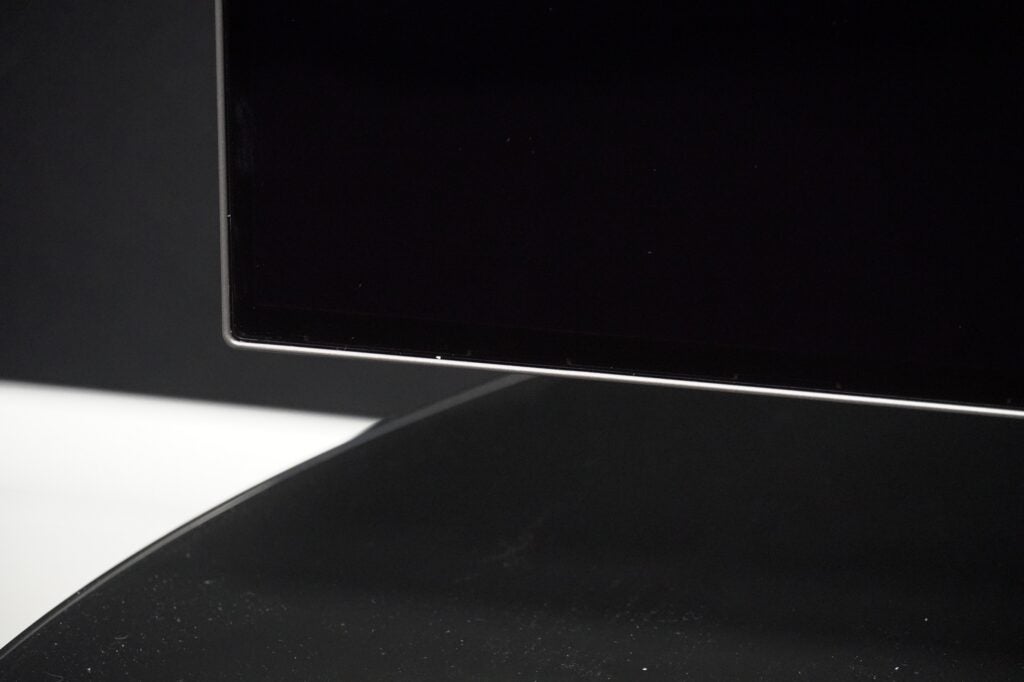
Software
- Swaps Android for Google TV
- Missing Freeview Play integration
- Improved menu interface
Rather than push Android TV interface for another year, Philips has jumped to Google TV, though there’s currently no Freeview Play support – yet.
Freeview and Google haven’t come to an agreement yet, though Philips expects a resolution sooner rather than later. For the time being, to get all the catch-up and on-demand apps in the UK, you’ll need to plug in a streaming stick or set-top box.
Aside from that, Google TV is an improvement over Android TV. Navigation is more fluid with no slowdown. Content curation is better, with recommendations offered from a wider range of apps. It’s not necessarily perfect in what it recommends though. The live action Loki appearing in a list of animated shorts is a faux pas.
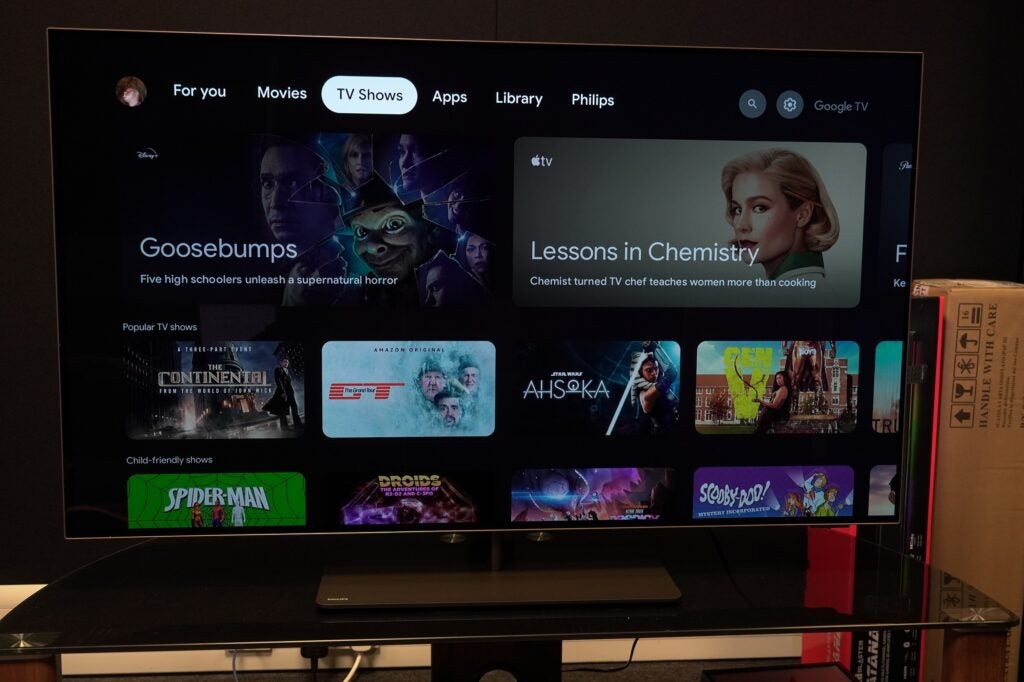
Google TV covers the main video streaming apps in their Dolby Vision/Atmos forms, with Prime Video also supporting content in HDR10+ Adaptive. In short, sound and vision through the likes of Netflix, Disney+, and Apple TV+ should be the best the 48OLED808 can muster.
Philips’ own menus have been improved – more responsive, not as densely filled with information, and the menus no longer take up the entirety of the screen. That’s helpful for those who like to tinker and see the effect in real-time.
There is a tweaked remote, and it works fine, though there are two ‘settings’ buttons – one of which can’t be accessed unless it’s pressed on one of the inputs, while the other opens the ‘quick settings’ menu. Couldn’t it be simpler?
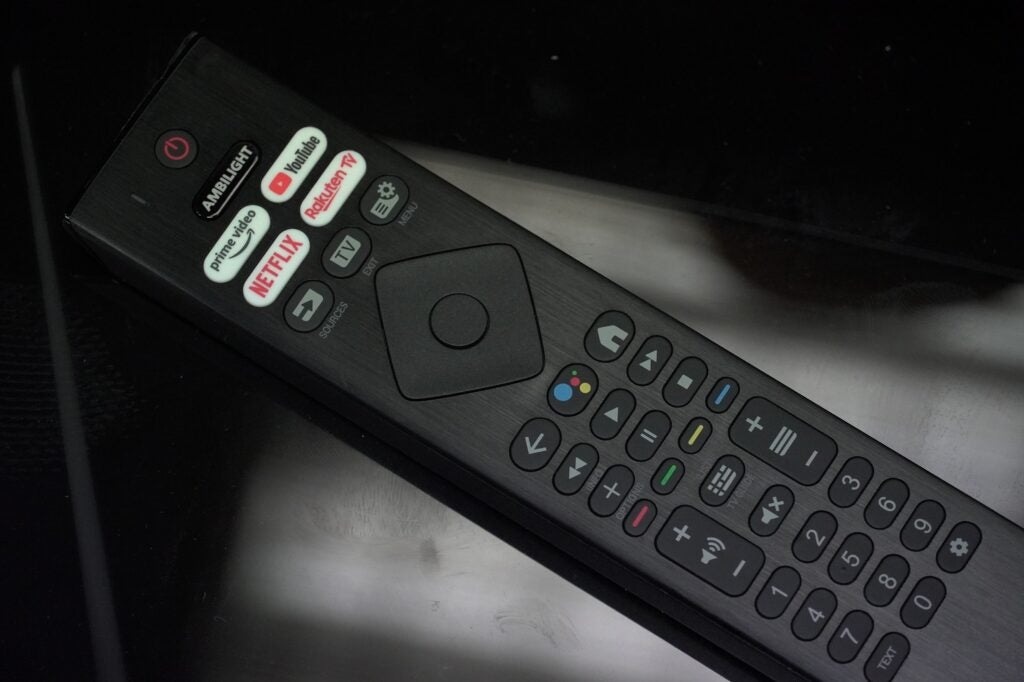
Features
- Ambilight bias lighting
- 4K/120Hz gaming support
- Full house for HDR formats
Ambilight celebrates its 20th anniversary in 2024, though for this 2023 model there’s nothing new with regards to Ambilight.
Ambilight Aurora is available, offering a chilled-out experience with music and images on a loop – watch it in a dark room and it can be a quite vivid experience. Whether you’re watching TV, movies, listening to music or playing games, there’s an Ambilight mode for each of those activities.
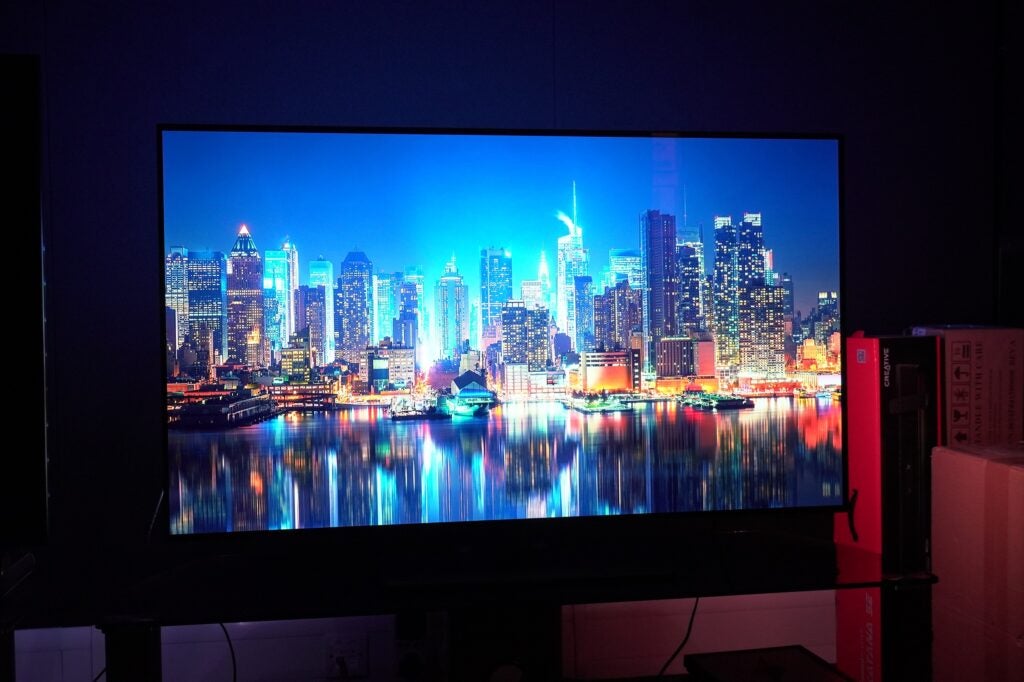
On the gaming front the Philips 48OLED808 has a native 120Hz screen with support for VRR (HDMI, AMD FreeSync Premium, Nvidia G-Sync compatible), ALLM, Dolby Vision Game mode, and refresh rates up to 4K/120Hz. That puts it on a similar footing to the OLED48C3.
Input lag in game mode is comparable too, as I measured it at 12.7ms, though LG’s TVs can reduce it in the appropriately named Boost mode to below 10ms. Regardless, with games that support VRR, even lower latencies are possible on the 48OLED808.
Unlike LG, the Philips only offers the HDMI 2.1 standard across two of its four HDMI inputs, of which one is shared with the ARC/eARC input for connecting a sound system. If you have more than one 2.1 capable source and a soundbar, you’ll have to do some swapping.
The rest of the connections amount to the CI+ interface, Ethernet port, digital optical audio output, satellite, and service connectors, three USBs, and headphone output. Wireless includes Wi-Fi (Chromecast) as well as Bluetooth 5.
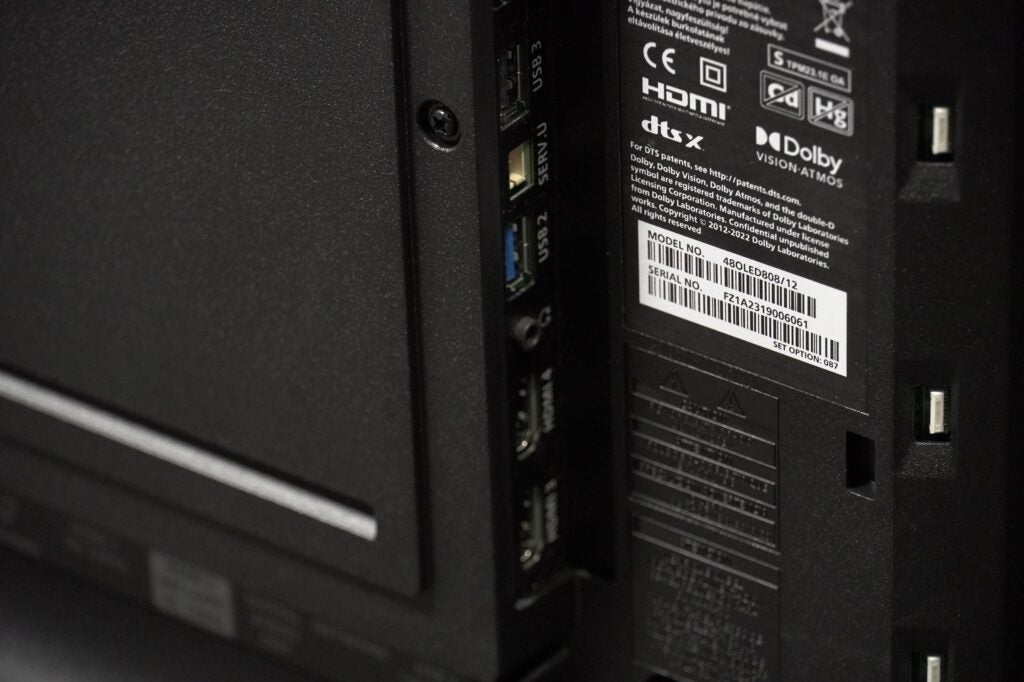
Google Assistant is built in and available via the remote. If you prefer Alexa that’s not available natively through the TV – you’ll need an external speaker/device to connect to Amazon’s AI assistant.
On the picture and audio front, there’s HDR10, HLG, HDR10+ Adaptive and Dolby Vision. HDR10+ Adaptive can adjust its performance using the TV’s light sensor for the best performance in bright and dark rooms.
Filmmaker mode is included, disabling processing to preserve the creator’s intent, while IMAX Enhanced optimises video and sound in-line with IMAX’s own requirements.
Pictures are fed through Philips’ P5 AI Perfect Engine that uses deep-learning AI algorithms to improve the image to make it more ‘realistic’, although this processing doesn’t apply to Filmmaker or (I think) IMAX modes.
With audio there’s Dolby Atmos, and the 48OLED808 plays nicely with DTS:X soundtracks too through its 70W 2.1 sound system. You also get DTS Play-Fi support whereby you can set up a wireless surround sound system or a multi-room environment, as well as Mimi Sound Personalisation that can enhance the sound according to your hearing abilities.
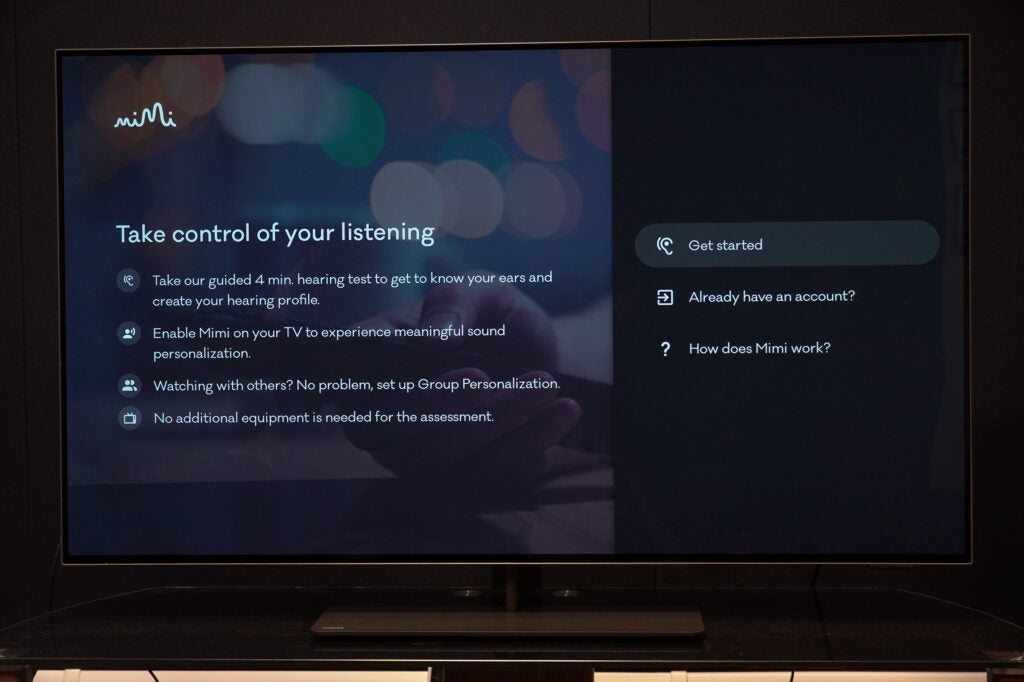
Picture Quality
- Perceptually dimmer than OLED807
- Some motion stutter
- High levels of sharpness, clarity, and detail
If I’m not mistaken, the Philips 48OLED808 features an OLED EX panel from LG Display. In theory, that should offer higher peak brightness than the 48OLED807 screen.
And in the measurement tests I carried out, that turns out to be true. Luminance on 5% and 10% HDR window is 653 and 580 nits, up from the 48OLED807’s 416 and 380 nits. That should result in a brighter HDR picture.
But numbers only tell part of the story, and while the 48OLED808 is brighter on paper, it does not look or feel brighter than its predecessor.
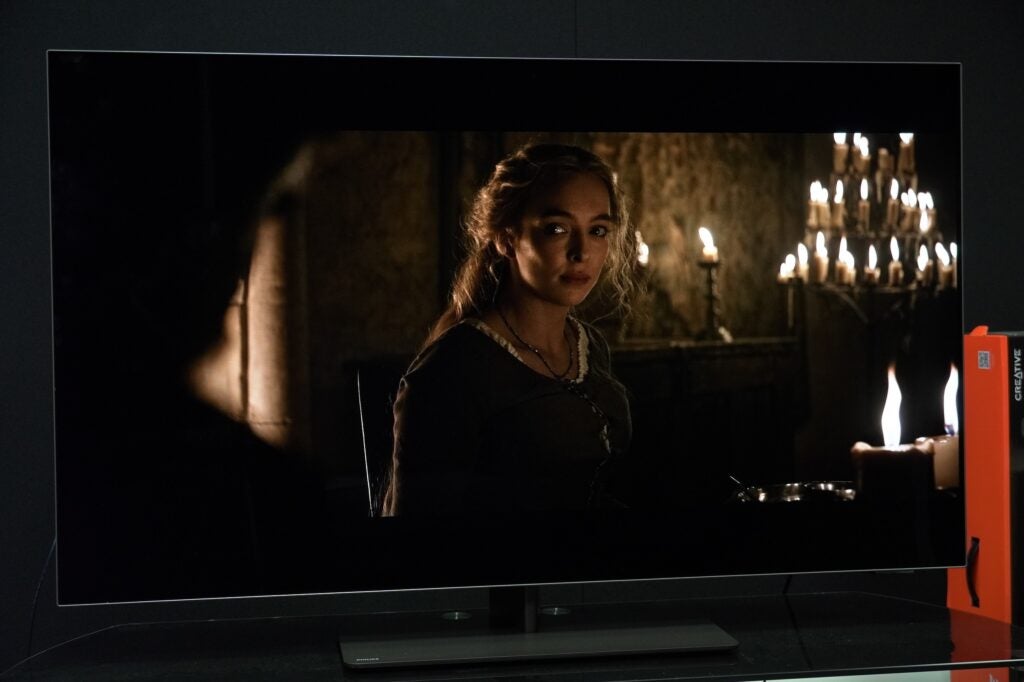
Viewing Ridley Scott’s The Last Duel on 4K Blu-ray, and the highlights of the candles in the dimly-lit chamber scenes don’t feel as intensely bright as I’ve come to expect from Philips’ OLEDs.
The overall image feels a bit dimmer, and watching The Last Duel as well as Elemental on Disney+ in Dolby Vision, Bright mode leaves me with a similar feeling – brightness and colours lack a little punch. The fire population in the animated film feels warm rather than flaming hot.
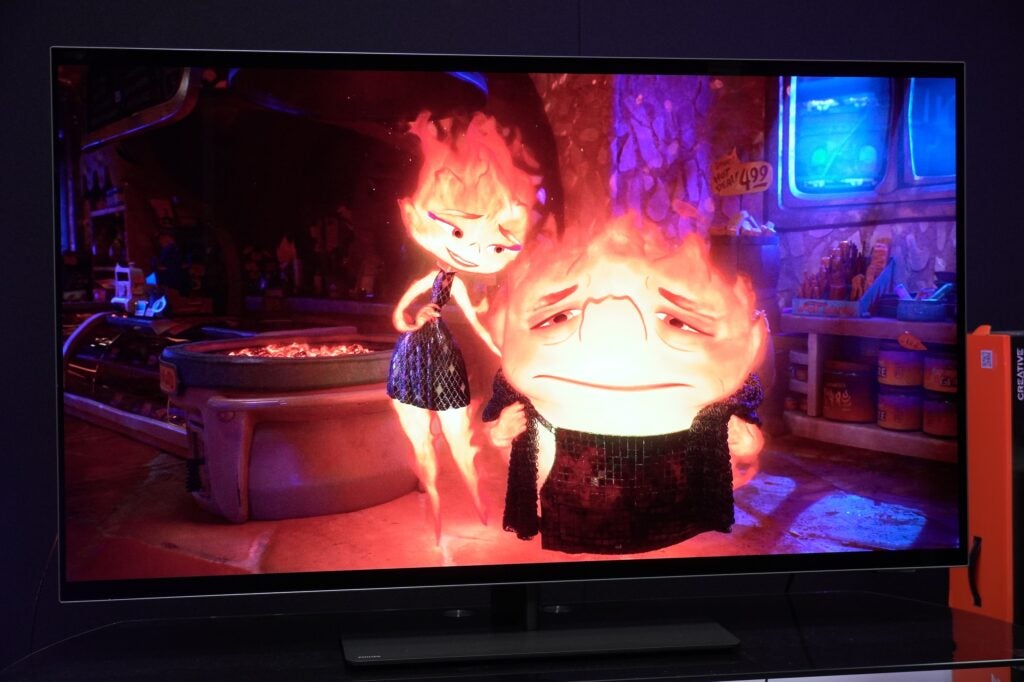
White tones aren’t as bright as they were on the 48OLED807 while watching She Hulk: Attorney at Law, so while contrast is satisfyingly good with OLED’s customary deep blacks, there’s not the level of punch or vividness I feel is Philips’ stock in trade.
And measured up against a similarly bright Sony XR-55X85L LCD TV, the array of colours is wider on the Sony. With Anatomy of a Scandal on Netflix, white tones look brighter on the Sony – colours have more volume – the Philips takes a less vibrant tone with reds especially. Skin tones come across as greyer and pallid, while detail in the image’s darkest parts is better on the Sony. The 48OLED808’s black levels are deep and a little impenetrable at times.
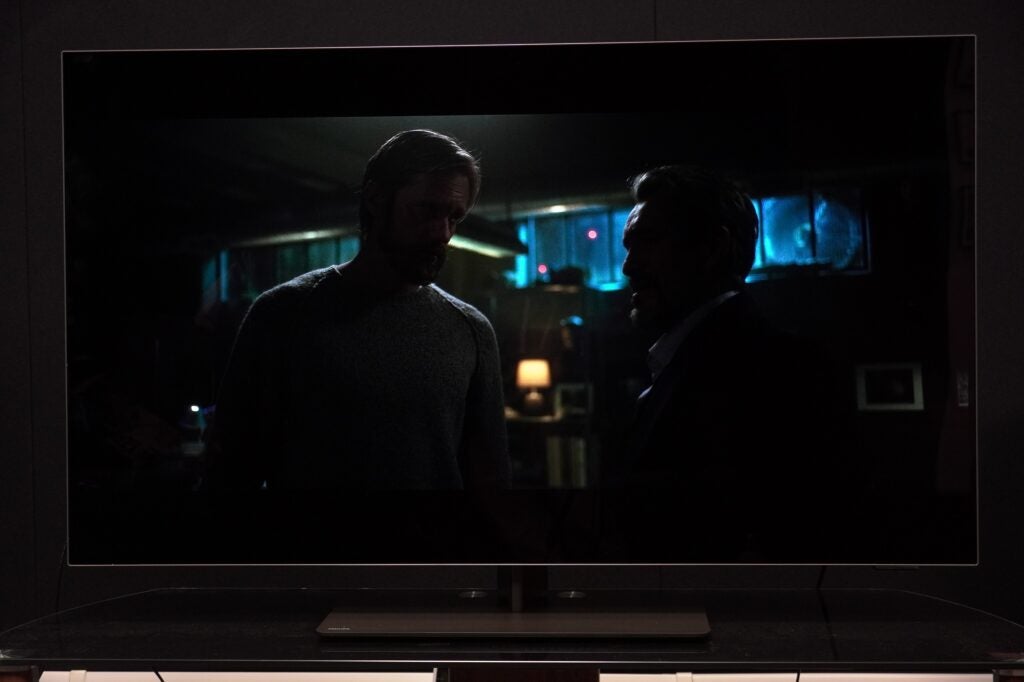
Each screen tech has its own strengths and weaknesses, but weighed up against an LCD TV, I find myself preferring how the Sony operates. That I did not expect.
The Philips also suffers from motion issues, specifically stuttering, and this is across all the MEMC settings. As K comes into land at the Los Angeles police station in Blade Runner 2049, judder is evident. Viewing The Fablemans in Dolby Vision and there is noise and judder in places, and though the Movie setting results in a smoother image, there are still some distracting artefacts.
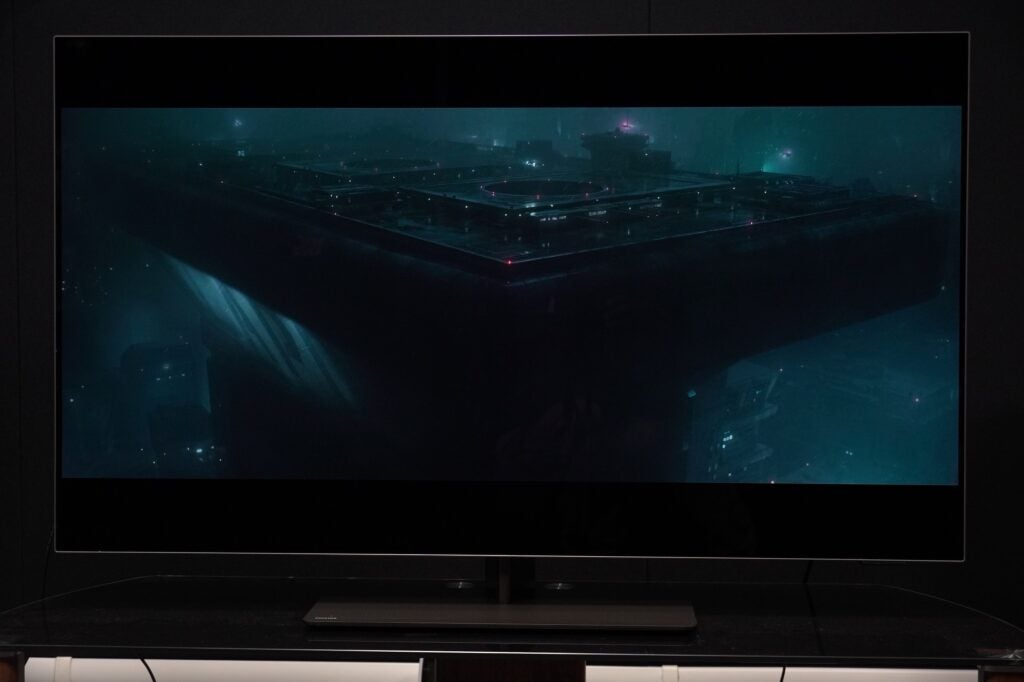
So far, I’ve been a little unenthused by the Philips, but it is capable of frequent excellence. The stream of Anatomy of a Scandal features high levels of sharpness and detail that blows the Sony X85L out of the water; and it’s the same with The Last Duel. The Philips wrings every bit of sharpness and definition to faces, objects, and environments as it can for a higher quality image.
Upscaling is another strong area when watching Casino on Blu-ray. I would say with SDR content, it’s better to watch in the Home Cinema mode than Filmmaker, which lends colours a more natural warmth.
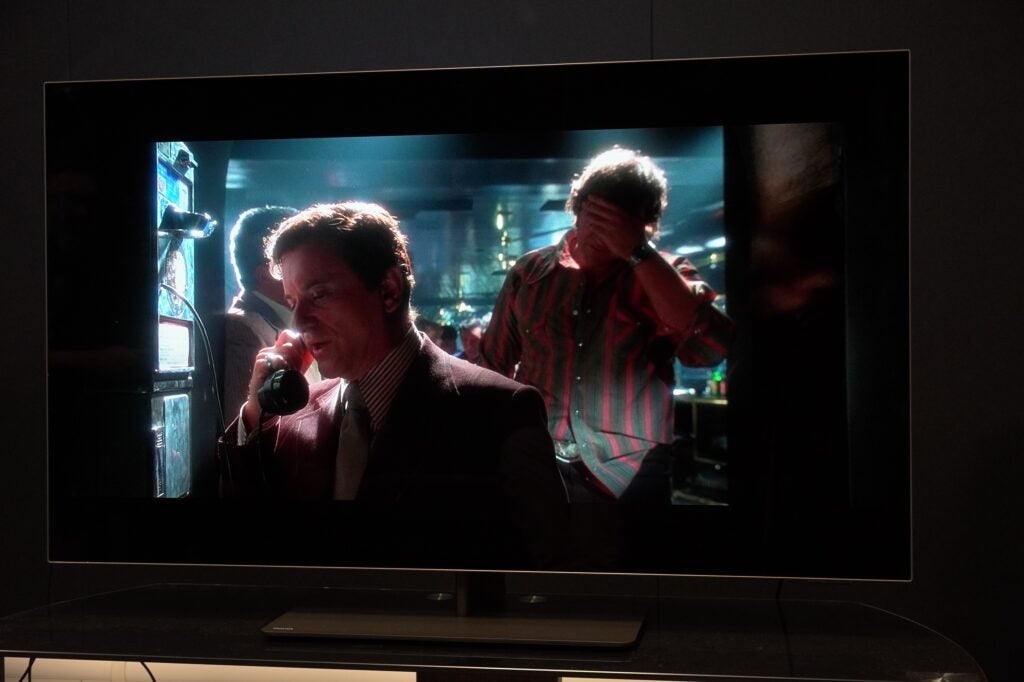
Otherwise, the Philips P5 processor maintains the cinematography’s soft appearance with its pastel look, producing natural but also punchy, bright, and vibrant colours – the contrast in the night shots really brings the Vegas strip alive. There are fine levels of detail, skin tones have a naturally warm emphasis, with Casino feeling every bit as filmic as it should with its grain levels. This film looks terrific on this TV.
With a DVD of Sherlock Holmes: A Game of Shadows, the 48OLED808 proves adept at managing lower resolution sources. The P5 processor doesn’t go full hog on sharpening the image but it’s not too soft either, retrieving a decent amount of fine detail that makes for a watchable enough two hours.
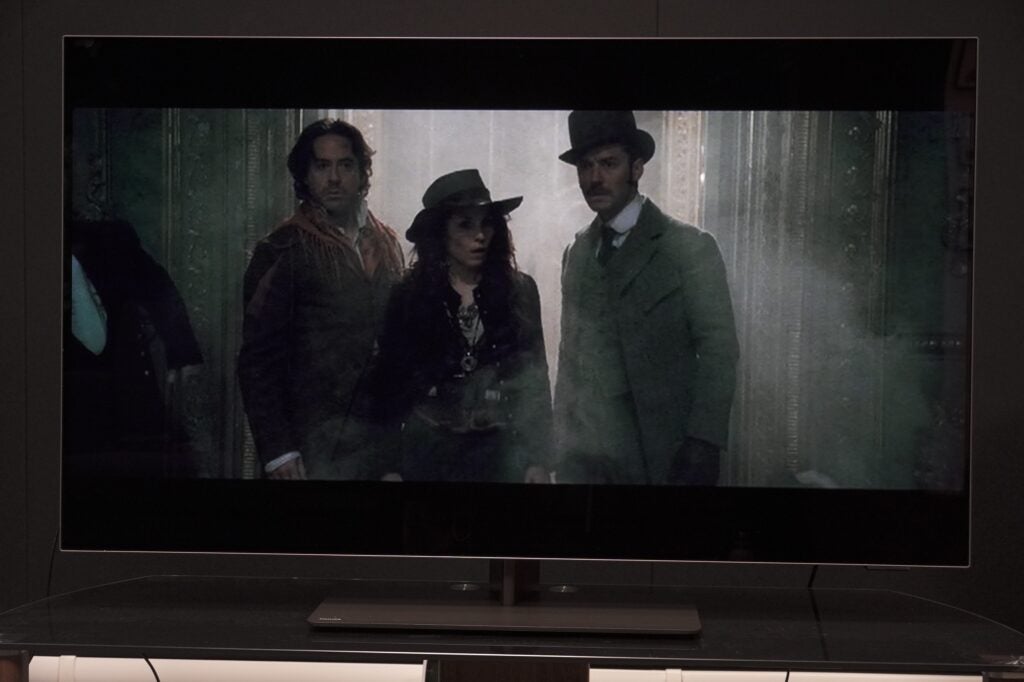
Faces can appear slightly smooth in some shots but not waxy. There’s also a good definition of edges – I can’t spot any jagged edges – and what noise there is in the actor’s faces is managed well enough to not distract. Colour reproduction is good, although black levels are almost too inky.
The upscaling works because it’s not heavy-handed, gently massaging and uplifting the image where refinement is needed. Previous Philips OLEDs could over-sharpen the image – the 48OLED808 finds a good balance.
Sound Quality
- Good bass
- Good with music
- Plenty of scale and energy
This 48-inch screen sounds better than some bigger TVs. The scale and size of its output makes for a superior sounding system. With Dune (Prime Video) the audio system can be appropriately big and intense with the film’s action scenes, such as when the Harkonnens attack the Atreides base.
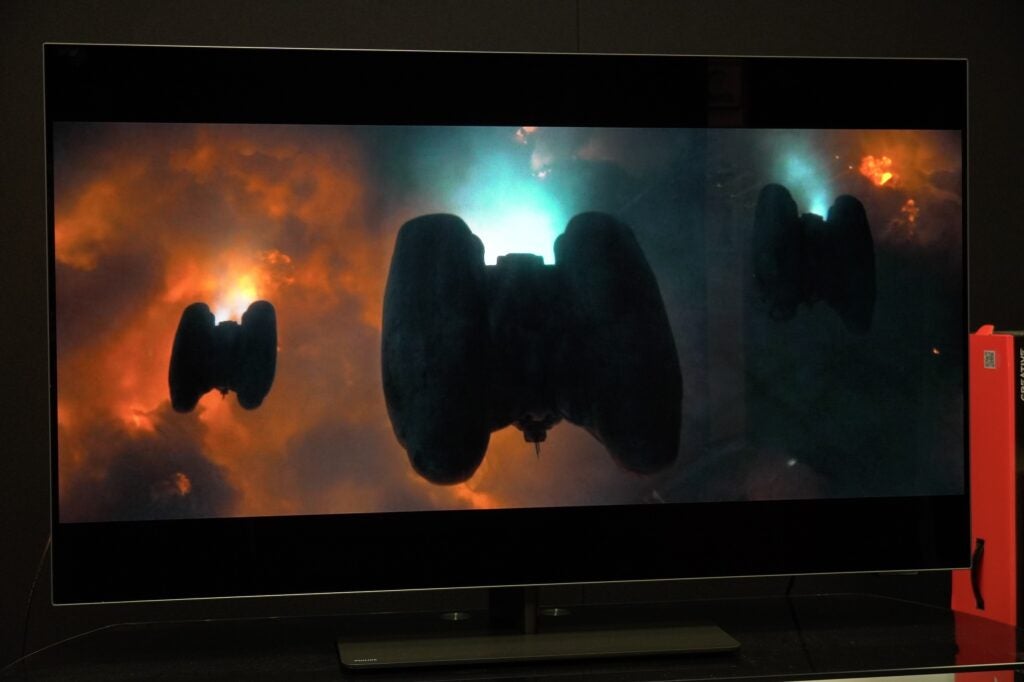
High frequencies are furnished with satisfying levels of clarity, and dialogue reproduction is never less than solid and well prioritised. There’s a smoothness to dialogue that I find works well and avoids sibilant tones, though some may feel it’s a little fuzzy.
I’d disagree with that assertion. There’s a naturalism to dialogue with no sense of it sounding muffled, and where required the TV steers dialogue into the right areas to make it appear as if it’s coming direct from actors’ mouths.
The bass is good, with weight to Kong’s footsteps at the beginning of Godzilla vs Kong that conveys his sheer size. While in one of the later fights between Godzilla and Kong, there’s decent weight to the punches being thrown that, again, adds to the size and scale of the clash.
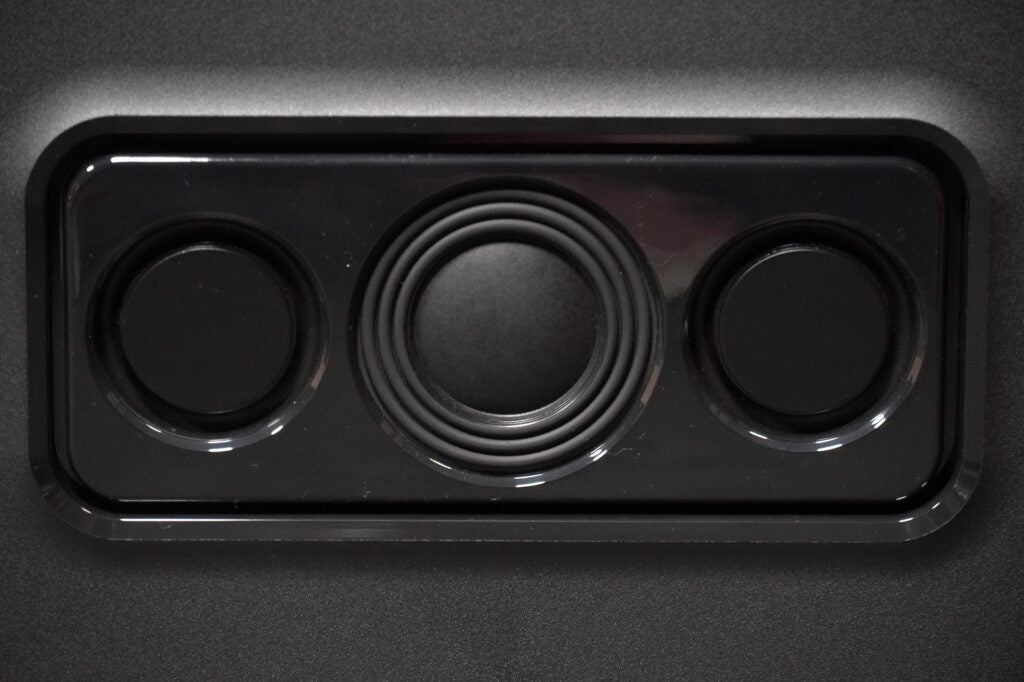
The Entertainment profile is the best mode for movies, much bigger, wider, and more expansive than with Original mode.
With music (streaming from Qobuz), and the Philips 48OLED808 sounds much better than I expected it to. Highway to the Anger Zone from The Batman soundtrack features punch, drive, and energy to the low frequencies; and the top end of frequency range isn’t too sharp, the TV mines good levels of clarity and detail from the string orchestration.
It just about avoids sibilance with Chris Cornell’s voice in Black Hole Sun, while with Raveena’s Headaches there’s decent depth to the bass. This Philips could act as a serviceable music system on its own.
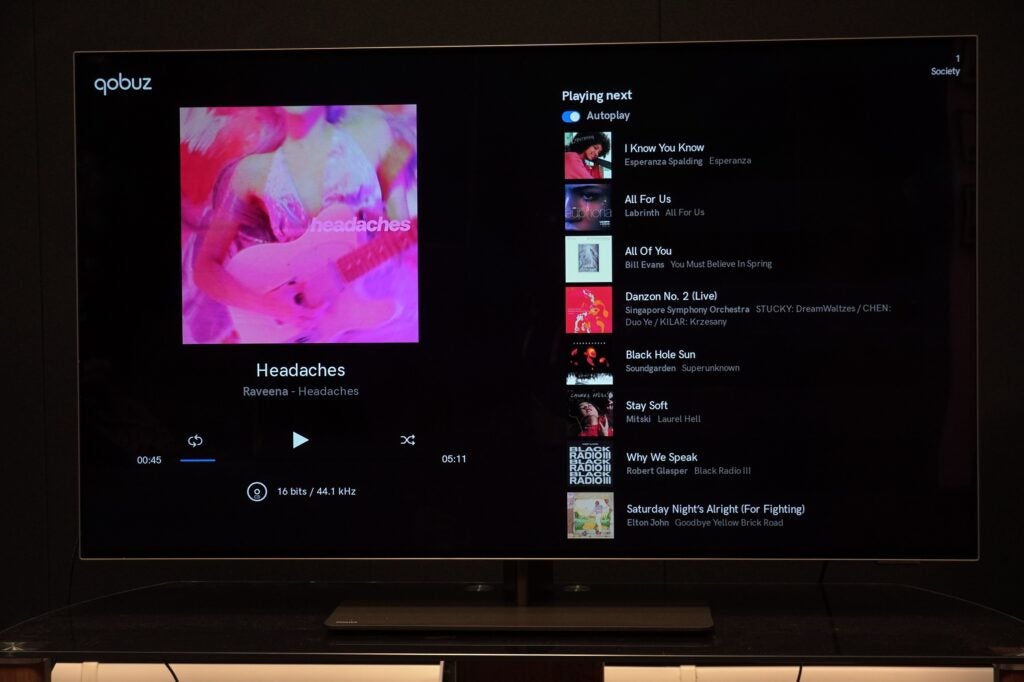
It’s not the most dynamic, but the midrange and treble are clear with a nice crispness to the highs. There are plenty of modes to choose from: Personal offers lots of customisation and Music mode is good with voices though I scratch my head with the Spatial Music mode. I can’t hear much difference aside from focusing on the vocals (which can sound a little echoey) to provide a little more depth to music.
Latest deals
Should you buy it?
To give your eyes a rest
Ambilight bias lighting does also provide real-world benefits by reducing eye fatigue. It also just looks really cool.
You watch TV in bright rooms
Though the 48OLED808 is brighter than its predecessor on paper, it doesn’t feel that way watching it. LG’s small OLEDs are brighter still, and around the same price.
Final Thoughts
In short, the Philips 48OLED808 is a very good TV. It’s just not quite as good as the now discontinued 48OLED807 felt.
Though it’s brighter on paper, the picture feels dimmer than its predecessor; the colours aren’t as vibrant and wide-ranging as I’d hoped, and the motion processing suffers from a few distracting artefacts. Add to Google TV not yet supporting Freeview Play, and it’s a slightly diminished overall performance.
The announcement of the OLED809 may also give some pause, though at its current price of £1099, the 48OLED808 is worth considering. It’s another slick, small screen OLED from Philips, but as good as it is, I’d be tempted to wait for the OLED809 coming later in 2024. Check out our Best TV guide for more options.
How we test
We test every television we review thoroughly over an extended period of time. We use industry standard tests to compare features properly. We’ll always tell you what we find. We never, ever, accept money to review a product.
Find out more about how we test in our ethics policy.
Tested with real world use
FAQs
The Philips 48OLED808 is compatible with wall mount sizes 300 x 300mm.
Trusted Reviews test data
Verdict
The Philips 48OLED808 is another slick Ambilight TV with engaging picture quality and good audio for a small TV. It isn’t as bright as hoped, though, and falters with stutter motion processing, and is still lacking Freeview Play integration for UK users.
Pros
- Sharp and detailed 4K image
- Superior audio system
- Ambilight
- Full house for HDR formats
- Wide gaming features
Cons
- Perceptually dimmer than predecessor
- Motion stutter
- Missing Freeview Play integration
-
P5 AI perfect picture engineImproves contrast, sharpness, and motion for a more ‘realistic’ image -
AmbilightThree-sided Ambilight support -
VRR4K/120Hz refresh rates, HDMI, AMD and Nvidia VRR support
Introduction
The Philips OLED807 was a cracking 4K TV, so I had every hope that its sequel – the OLED808 – would match and surpass its predecessor.
On the test bench is the 48-inch version – 48OLED808 – this latest model is one of the first batches of Philips’ OLEDs to move from Android TV to Google TV.
More of the same is not a bad precedent when talking about the follow-up to a five-star TV, though with LG dominating the OLED market, the 48OLED808 must put in a strong shift to persuade potential LG customers to jump ship.
Design
- Swivel stand
- Easier to assemble than previous model
- Excellent viewing angles
At first glance, there’s not much to differentiate between the OLED807 and OLED808 aside from the change in stand design. Gone is the shiny and chrome version that was magnet for fingerprints, and in its place is a grey-coloured central pedestal. It’s a more accommodating design if you don’t have a wide space to perch this TV on.

There is swivel action, especially helpful to protect against sunlight glare, and assembly is quicker – it took me around two minutes to put the TV together compared to five for the previous model. Around the back of the stand you’ll find a compartment to pipe cables through and keep the rear area free of clutter.

The rear panel design mirrors Philips’ prior mid-range OLEDs: the sound system planted in the middle, connections facing down and to the side, with the Ambilight system around the edges. The Ambilight system is a downgrade on the 2023 model, available in its three-sided form rather than four-side implementation. If you wall-mount it leaves the bottom edge exposed.
Coming back to the front and the Philips 48OLED808 is an aesthetically elegant TV. Slim bezels ensure plenty of space for its pictures, enclosed in a thin metal casing. Reflections weren’t a noticeable issue on this set, and viewing angles are excellent – as expected for an OLED – holding up better than LCD TVs.

Software
- Swaps Android for Google TV
- Missing Freeview Play integration
- Improved menu interface
Rather than push Android TV interface for another year, Philips has jumped to Google TV, though there’s currently no Freeview Play support – yet.
Freeview and Google haven’t come to an agreement yet, though Philips expects a resolution sooner rather than later. For the time being, to get all the catch-up and on-demand apps in the UK, you’ll need to plug in a streaming stick or set-top box.
Aside from that, Google TV is an improvement over Android TV. Navigation is more fluid with no slowdown. Content curation is better, with recommendations offered from a wider range of apps. It’s not necessarily perfect in what it recommends though. The live action Loki appearing in a list of animated shorts is a faux pas.

Google TV covers the main video streaming apps in their Dolby Vision/Atmos forms, with Prime Video also supporting content in HDR10+ Adaptive. In short, sound and vision through the likes of Netflix, Disney+, and Apple TV+ should be the best the 48OLED808 can muster.
Philips’ own menus have been improved – more responsive, not as densely filled with information, and the menus no longer take up the entirety of the screen. That’s helpful for those who like to tinker and see the effect in real-time.
There is a tweaked remote, and it works fine, though there are two ‘settings’ buttons – one of which can’t be accessed unless it’s pressed on one of the inputs, while the other opens the ‘quick settings’ menu. Couldn’t it be simpler?

Features
- Ambilight bias lighting
- 4K/120Hz gaming support
- Full house for HDR formats
Ambilight celebrates its 20th anniversary in 2024, though for this 2023 model there’s nothing new with regards to Ambilight.
Ambilight Aurora is available, offering a chilled-out experience with music and images on a loop – watch it in a dark room and it can be a quite vivid experience. Whether you’re watching TV, movies, listening to music or playing games, there’s an Ambilight mode for each of those activities.

On the gaming front the Philips 48OLED808 has a native 120Hz screen with support for VRR (HDMI, AMD FreeSync Premium, Nvidia G-Sync compatible), ALLM, Dolby Vision Game mode, and refresh rates up to 4K/120Hz. That puts it on a similar footing to the OLED48C3.
Input lag in game mode is comparable too, as I measured it at 12.7ms, though LG’s TVs can reduce it in the appropriately named Boost mode to below 10ms. Regardless, with games that support VRR, even lower latencies are possible on the 48OLED808.
Unlike LG, the Philips only offers the HDMI 2.1 standard across two of its four HDMI inputs, of which one is shared with the ARC/eARC input for connecting a sound system. If you have more than one 2.1 capable source and a soundbar, you’ll have to do some swapping.
The rest of the connections amount to the CI+ interface, Ethernet port, digital optical audio output, satellite, and service connectors, three USBs, and headphone output. Wireless includes Wi-Fi (Chromecast) as well as Bluetooth 5.

Google Assistant is built in and available via the remote. If you prefer Alexa that’s not available natively through the TV – you’ll need an external speaker/device to connect to Amazon’s AI assistant.
On the picture and audio front, there’s HDR10, HLG, HDR10+ Adaptive and Dolby Vision. HDR10+ Adaptive can adjust its performance using the TV’s light sensor for the best performance in bright and dark rooms.
Filmmaker mode is included, disabling processing to preserve the creator’s intent, while IMAX Enhanced optimises video and sound in-line with IMAX’s own requirements.
Pictures are fed through Philips’ P5 AI Perfect Engine that uses deep-learning AI algorithms to improve the image to make it more ‘realistic’, although this processing doesn’t apply to Filmmaker or (I think) IMAX modes.
With audio there’s Dolby Atmos, and the 48OLED808 plays nicely with DTS:X soundtracks too through its 70W 2.1 sound system. You also get DTS Play-Fi support whereby you can set up a wireless surround sound system or a multi-room environment, as well as Mimi Sound Personalisation that can enhance the sound according to your hearing abilities.

Picture Quality
- Perceptually dimmer than OLED807
- Some motion stutter
- High levels of sharpness, clarity, and detail
If I’m not mistaken, the Philips 48OLED808 features an OLED EX panel from LG Display. In theory, that should offer higher peak brightness than the 48OLED807 screen.
And in the measurement tests I carried out, that turns out to be true. Luminance on 5% and 10% HDR window is 653 and 580 nits, up from the 48OLED807’s 416 and 380 nits. That should result in a brighter HDR picture.
But numbers only tell part of the story, and while the 48OLED808 is brighter on paper, it does not look or feel brighter than its predecessor.

Viewing Ridley Scott’s The Last Duel on 4K Blu-ray, and the highlights of the candles in the dimly-lit chamber scenes don’t feel as intensely bright as I’ve come to expect from Philips’ OLEDs.
The overall image feels a bit dimmer, and watching The Last Duel as well as Elemental on Disney+ in Dolby Vision, Bright mode leaves me with a similar feeling – brightness and colours lack a little punch. The fire population in the animated film feels warm rather than flaming hot.

White tones aren’t as bright as they were on the 48OLED807 while watching She Hulk: Attorney at Law, so while contrast is satisfyingly good with OLED’s customary deep blacks, there’s not the level of punch or vividness I feel is Philips’ stock in trade.
And measured up against a similarly bright Sony XR-55X85L LCD TV, the array of colours is wider on the Sony. With Anatomy of a Scandal on Netflix, white tones look brighter on the Sony – colours have more volume – the Philips takes a less vibrant tone with reds especially. Skin tones come across as greyer and pallid, while detail in the image’s darkest parts is better on the Sony. The 48OLED808’s black levels are deep and a little impenetrable at times.

Each screen tech has its own strengths and weaknesses, but weighed up against an LCD TV, I find myself preferring how the Sony operates. That I did not expect.
The Philips also suffers from motion issues, specifically stuttering, and this is across all the MEMC settings. As K comes into land at the Los Angeles police station in Blade Runner 2049, judder is evident. Viewing The Fablemans in Dolby Vision and there is noise and judder in places, and though the Movie setting results in a smoother image, there are still some distracting artefacts.

So far, I’ve been a little unenthused by the Philips, but it is capable of frequent excellence. The stream of Anatomy of a Scandal features high levels of sharpness and detail that blows the Sony X85L out of the water; and it’s the same with The Last Duel. The Philips wrings every bit of sharpness and definition to faces, objects, and environments as it can for a higher quality image.
Upscaling is another strong area when watching Casino on Blu-ray. I would say with SDR content, it’s better to watch in the Home Cinema mode than Filmmaker, which lends colours a more natural warmth.

Otherwise, the Philips P5 processor maintains the cinematography’s soft appearance with its pastel look, producing natural but also punchy, bright, and vibrant colours – the contrast in the night shots really brings the Vegas strip alive. There are fine levels of detail, skin tones have a naturally warm emphasis, with Casino feeling every bit as filmic as it should with its grain levels. This film looks terrific on this TV.
With a DVD of Sherlock Holmes: A Game of Shadows, the 48OLED808 proves adept at managing lower resolution sources. The P5 processor doesn’t go full hog on sharpening the image but it’s not too soft either, retrieving a decent amount of fine detail that makes for a watchable enough two hours.

Faces can appear slightly smooth in some shots but not waxy. There’s also a good definition of edges – I can’t spot any jagged edges – and what noise there is in the actor’s faces is managed well enough to not distract. Colour reproduction is good, although black levels are almost too inky.
The upscaling works because it’s not heavy-handed, gently massaging and uplifting the image where refinement is needed. Previous Philips OLEDs could over-sharpen the image – the 48OLED808 finds a good balance.
Sound Quality
- Good bass
- Good with music
- Plenty of scale and energy
This 48-inch screen sounds better than some bigger TVs. The scale and size of its output makes for a superior sounding system. With Dune (Prime Video) the audio system can be appropriately big and intense with the film’s action scenes, such as when the Harkonnens attack the Atreides base.

High frequencies are furnished with satisfying levels of clarity, and dialogue reproduction is never less than solid and well prioritised. There’s a smoothness to dialogue that I find works well and avoids sibilant tones, though some may feel it’s a little fuzzy.
I’d disagree with that assertion. There’s a naturalism to dialogue with no sense of it sounding muffled, and where required the TV steers dialogue into the right areas to make it appear as if it’s coming direct from actors’ mouths.
The bass is good, with weight to Kong’s footsteps at the beginning of Godzilla vs Kong that conveys his sheer size. While in one of the later fights between Godzilla and Kong, there’s decent weight to the punches being thrown that, again, adds to the size and scale of the clash.

The Entertainment profile is the best mode for movies, much bigger, wider, and more expansive than with Original mode.
With music (streaming from Qobuz), and the Philips 48OLED808 sounds much better than I expected it to. Highway to the Anger Zone from The Batman soundtrack features punch, drive, and energy to the low frequencies; and the top end of frequency range isn’t too sharp, the TV mines good levels of clarity and detail from the string orchestration.
It just about avoids sibilance with Chris Cornell’s voice in Black Hole Sun, while with Raveena’s Headaches there’s decent depth to the bass. This Philips could act as a serviceable music system on its own.

It’s not the most dynamic, but the midrange and treble are clear with a nice crispness to the highs. There are plenty of modes to choose from: Personal offers lots of customisation and Music mode is good with voices though I scratch my head with the Spatial Music mode. I can’t hear much difference aside from focusing on the vocals (which can sound a little echoey) to provide a little more depth to music.
Latest deals
Should you buy it?
To give your eyes a rest
Ambilight bias lighting does also provide real-world benefits by reducing eye fatigue. It also just looks really cool.
You watch TV in bright rooms
Though the 48OLED808 is brighter than its predecessor on paper, it doesn’t feel that way watching it. LG’s small OLEDs are brighter still, and around the same price.
Final Thoughts
In short, the Philips 48OLED808 is a very good TV. It’s just not quite as good as the now discontinued 48OLED807 felt.
Though it’s brighter on paper, the picture feels dimmer than its predecessor; the colours aren’t as vibrant and wide-ranging as I’d hoped, and the motion processing suffers from a few distracting artefacts. Add to Google TV not yet supporting Freeview Play, and it’s a slightly diminished overall performance.
The announcement of the OLED809 may also give some pause, though at its current price of £1099, the 48OLED808 is worth considering. It’s another slick, small screen OLED from Philips, but as good as it is, I’d be tempted to wait for the OLED809 coming later in 2024. Check out our Best TV guide for more options.
How we test
We test every television we review thoroughly over an extended period of time. We use industry standard tests to compare features properly. We’ll always tell you what we find. We never, ever, accept money to review a product.
Find out more about how we test in our ethics policy.
Tested with real world use
FAQs
The Philips 48OLED808 is compatible with wall mount sizes 300 x 300mm.

